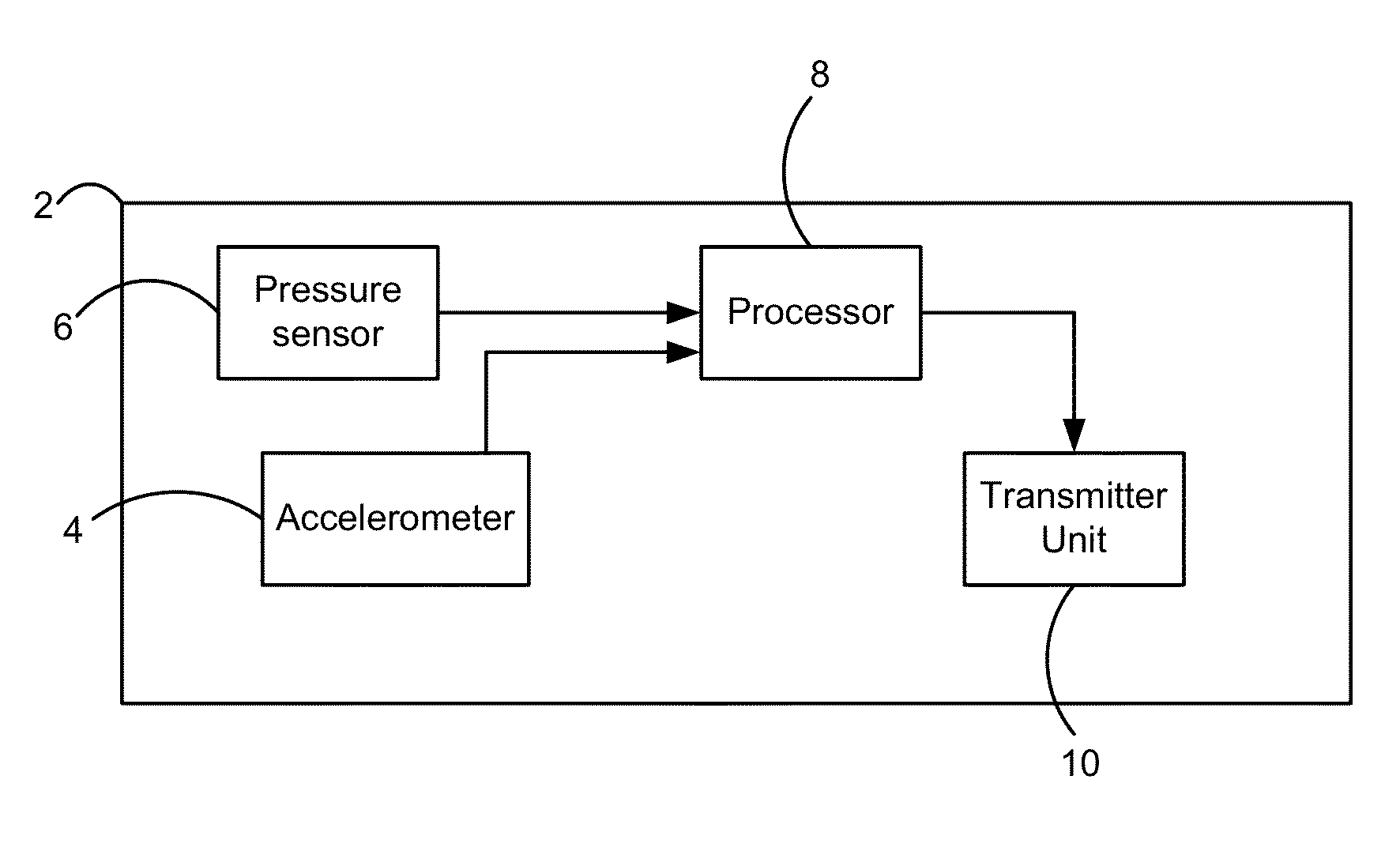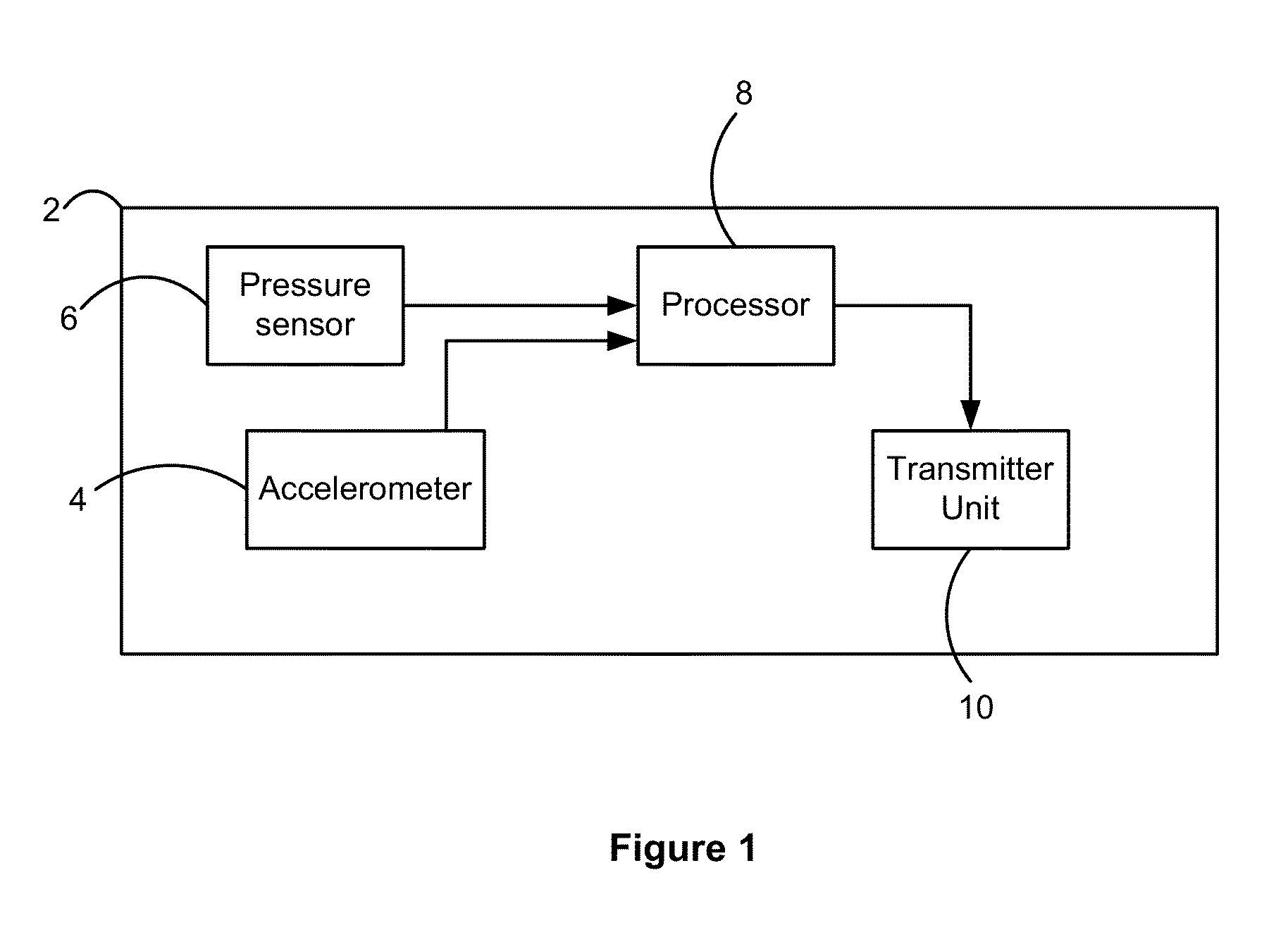Method for detecting falls and a fall detector
a technology of fall detection and detection method, which is applied in the direction of instruments, diagnostic recording/measuring, diagnostics, etc., can solve the problems of significant injuries, inability to push the button, and inability to receive help for a significant period of tim
- Summary
- Abstract
- Description
- Claims
- Application Information
AI Technical Summary
Benefits of technology
Problems solved by technology
Method used
Image
Examples
Embodiment Construction
[0024]A fall detector 2 according to an embodiment of the invention is shown in FIG. 1. The fall detector 2 is designed to be worn by a user, for example on their wrist, at their waist or on their chest or back, without adversely affecting the movement or balance of the user. In a preferred embodiment, such as that shown in FIG. 1, the fall detector 2 can be designed as a pendant to be worn around the neck of the user.
[0025]In this exemplary embodiment, the fall detector 2 comprises two sensors, an accelerometer 4 and pressure sensor 6, which are connected to a processor 8. The processor 8 receives measurements from the sensors 4, 6, and processes the measurements to determine if a user of the fall detector 2 has suffered a fall.
[0026]The fall detector 2 also comprises a transmitter unit 10 that allows the fall detector 2 to transmit an alarm signal to a base station associated with the fall detector 2 (which can then issue an alarm or summon help from a healthcare provider or the e...
PUM
 Login to View More
Login to View More Abstract
Description
Claims
Application Information
 Login to View More
Login to View More - R&D
- Intellectual Property
- Life Sciences
- Materials
- Tech Scout
- Unparalleled Data Quality
- Higher Quality Content
- 60% Fewer Hallucinations
Browse by: Latest US Patents, China's latest patents, Technical Efficacy Thesaurus, Application Domain, Technology Topic, Popular Technical Reports.
© 2025 PatSnap. All rights reserved.Legal|Privacy policy|Modern Slavery Act Transparency Statement|Sitemap|About US| Contact US: help@patsnap.com



